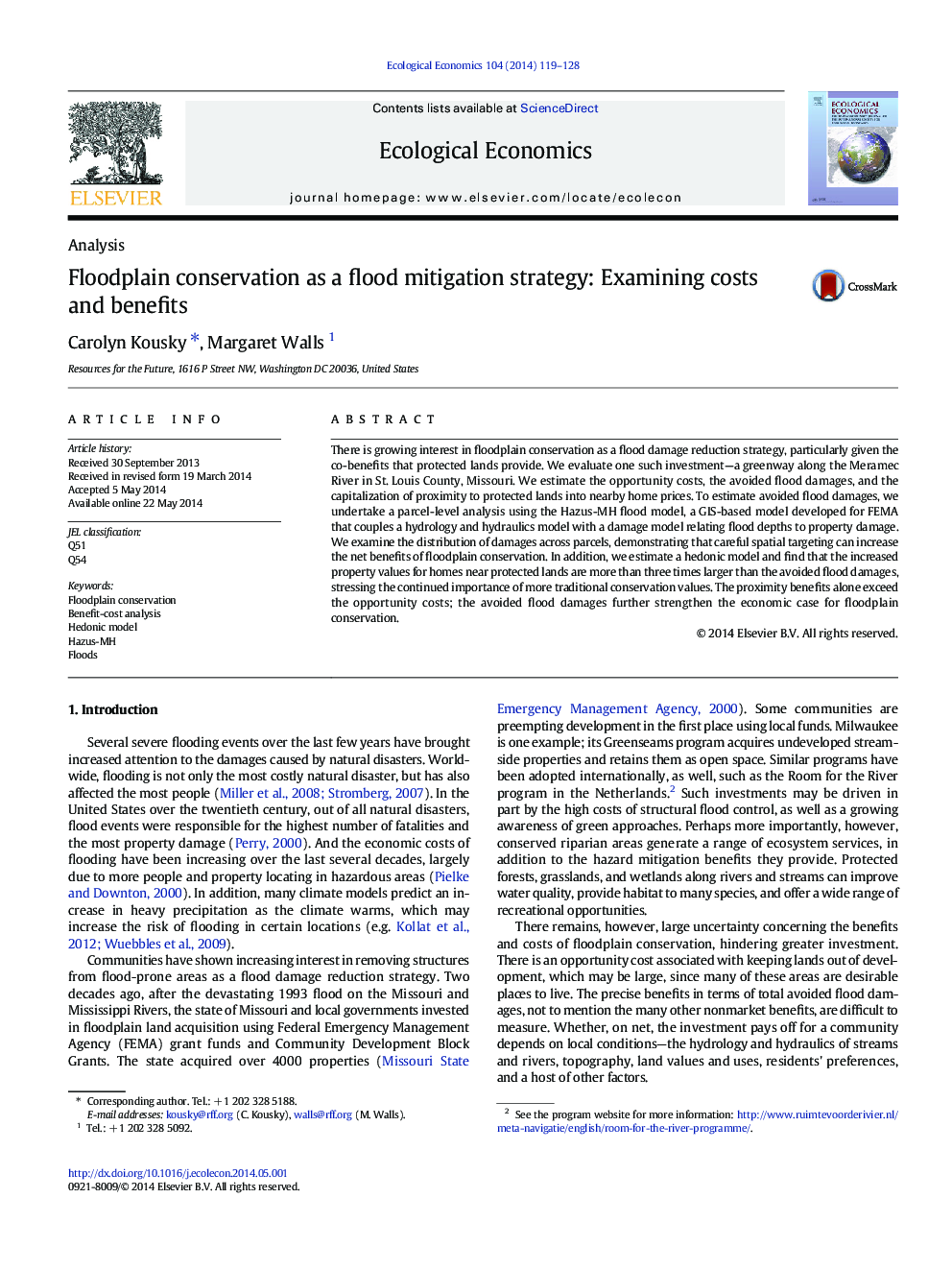| کد مقاله | کد نشریه | سال انتشار | مقاله انگلیسی | نسخه تمام متن |
|---|---|---|---|---|
| 5049555 | 1476375 | 2014 | 10 صفحه PDF | دانلود رایگان |
- We estimate the net benefits of a floodplain conservation effort in St. Louis County, Missouri.
- Hazus-MH was used to model avoided flood damages at a parcel level.
- We estimate a hedonic model to determine the capitalization of proximity to protected lands in housing values.
- The benefits of proximity to protected lands are three times larger than the avoided flood damages.
There is growing interest in floodplain conservation as a flood damage reduction strategy, particularly given the co-benefits that protected lands provide. We evaluate one such investment-a greenway along the Meramec River in St. Louis County, Missouri. We estimate the opportunity costs, the avoided flood damages, and the capitalization of proximity to protected lands into nearby home prices. To estimate avoided flood damages, we undertake a parcel-level analysis using the Hazus-MH flood model, a GIS-based model developed for FEMA that couples a hydrology and hydraulics model with a damage model relating flood depths to property damage. We examine the distribution of damages across parcels, demonstrating that careful spatial targeting can increase the net benefits of floodplain conservation. In addition, we estimate a hedonic model and find that the increased property values for homes near protected lands are more than three times larger than the avoided flood damages, stressing the continued importance of more traditional conservation values. The proximity benefits alone exceed the opportunity costs; the avoided flood damages further strengthen the economic case for floodplain conservation.
Journal: Ecological Economics - Volume 104, August 2014, Pages 119-128
